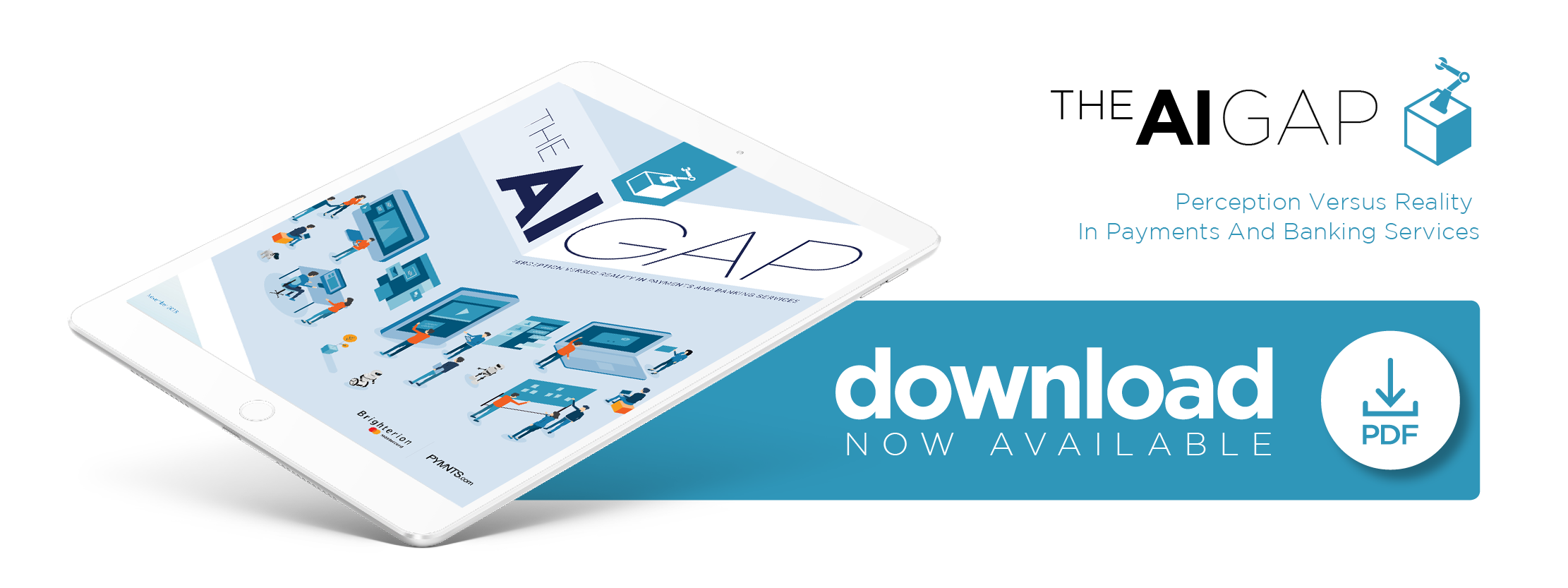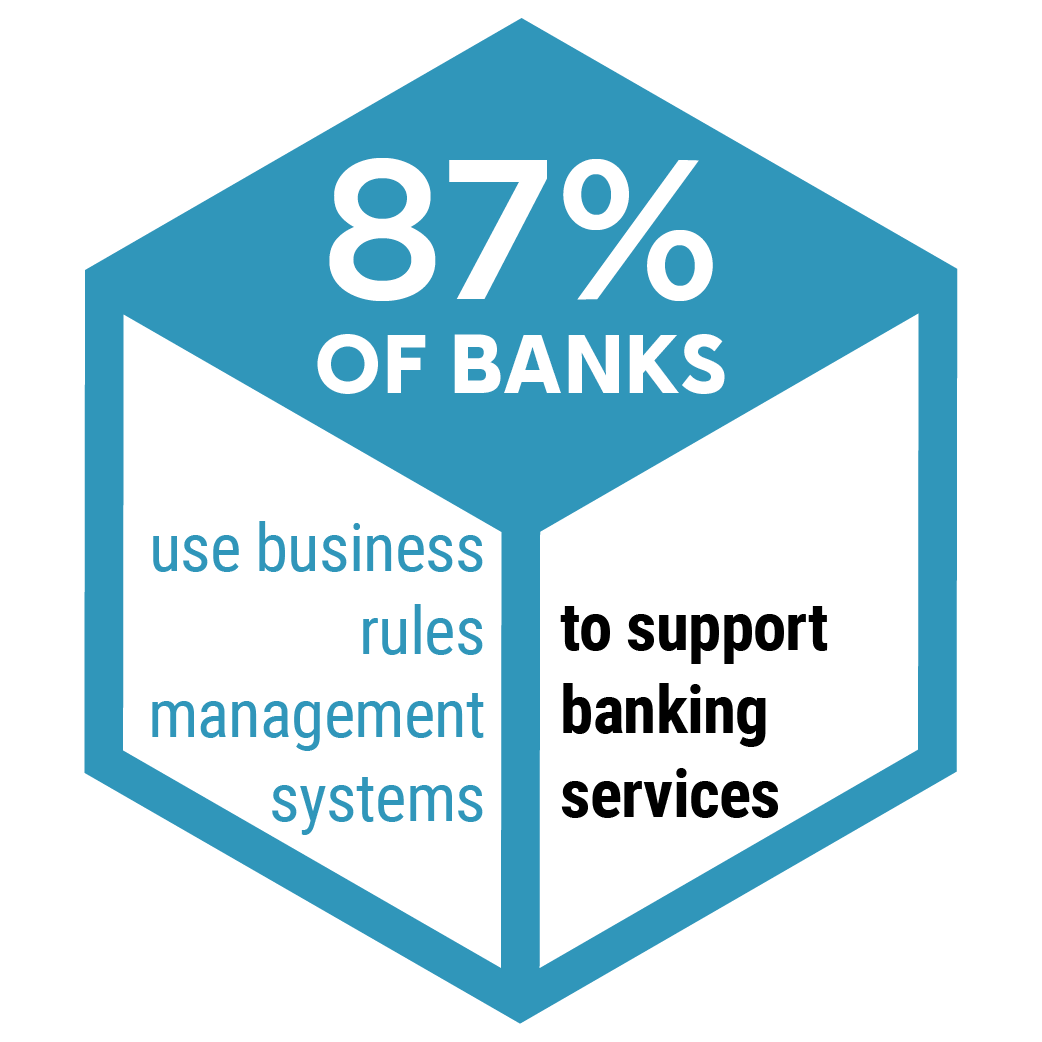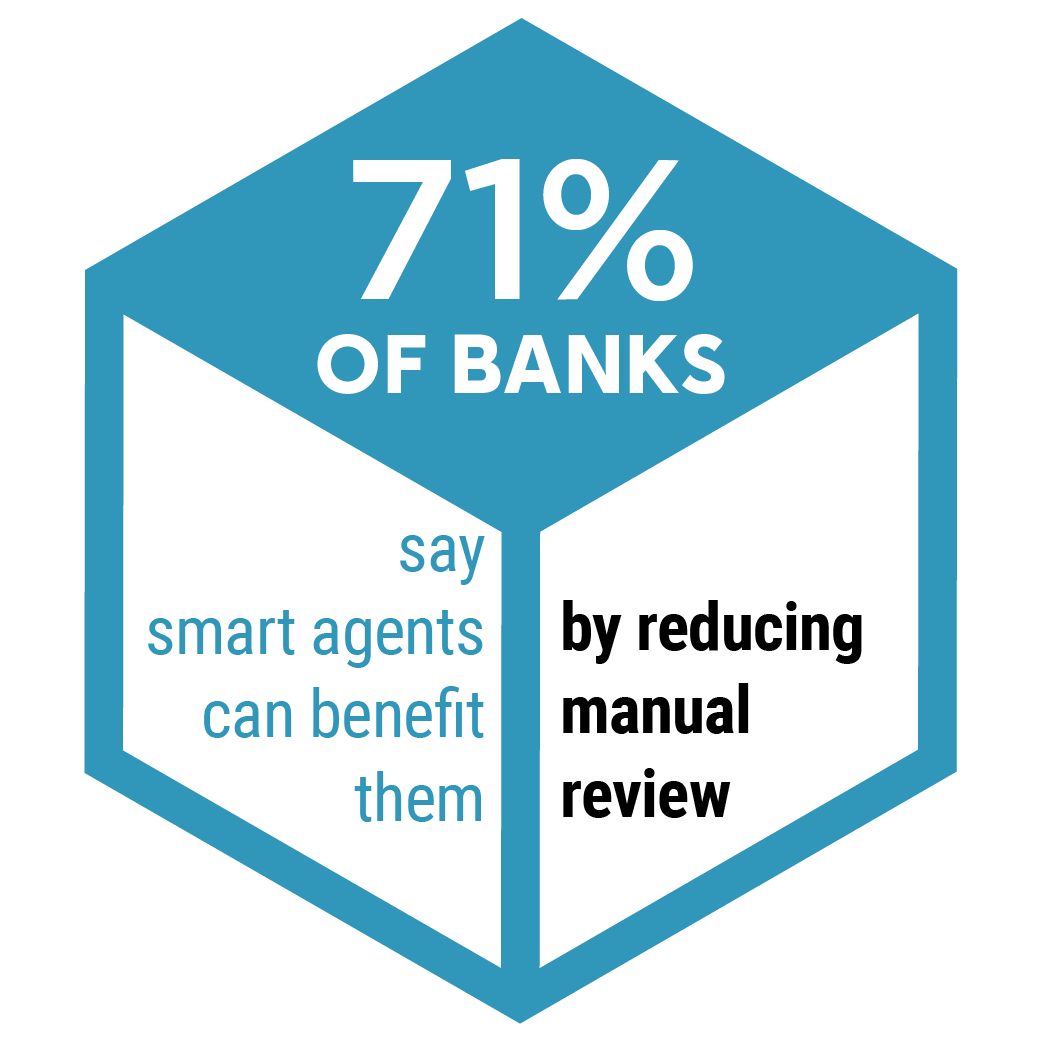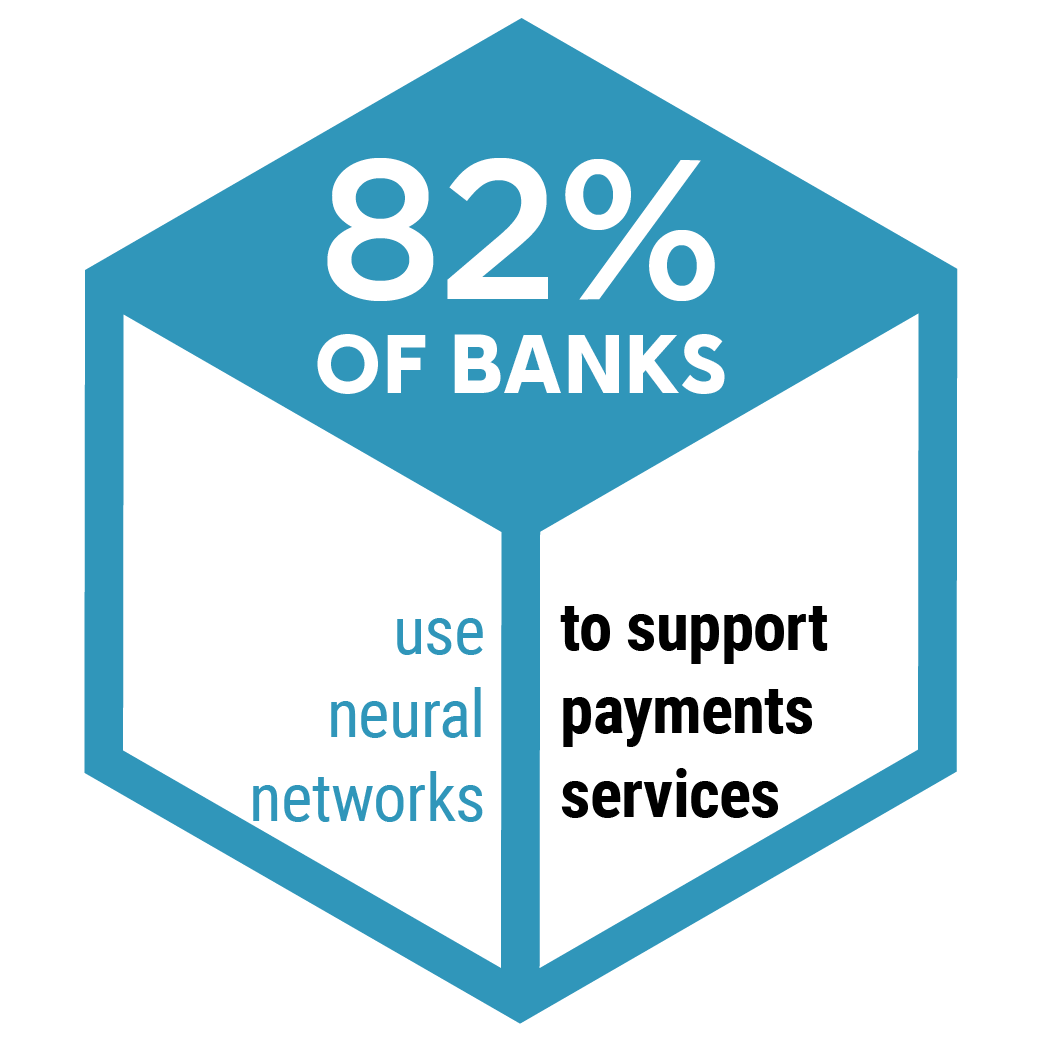NEW REPORT: Buzz Vs Reality — Measuring The AI Gap In Payments And Banking

Let’s play buzzword bingo: “AI” is so abuzz right now, it’s positively ablaze. However, does its usage live up to the label that the financial services and payments industry has given it? Not really. In the new study, The AI Gap, PYMNTS interviews executives at 200 FIs and analyzes over 12,800 data points. The research discovers that only 5.5 percent of banks actually use what experts call “true AI” to reduce false-positives and fight AML, as well as optimize credit and other payments and banking products. Get all the details here.
 “Artificial intelligence” (AI) may be a financial industry buzzword, but how many banks actually use it?
“Artificial intelligence” (AI) may be a financial industry buzzword, but how many banks actually use it?
 The truth is that AI is still relatively rare in the banking world, with only 5.5 percent of banks in our survey equipped with genuine AI systems. Meanwhile, the rest are relying on automation and machine learning (ML) technologies. In other words, financial institutions (FIs) that use AI are few and far between, but that’s not to say FIs from aren’t investing in it — or rather in what they think it is.
The truth is that AI is still relatively rare in the banking world, with only 5.5 percent of banks in our survey equipped with genuine AI systems. Meanwhile, the rest are relying on automation and machine learning (ML) technologies. In other words, financial institutions (FIs) that use AI are few and far between, but that’s not to say FIs from aren’t investing in it — or rather in what they think it is.
In the The AI Gap: Perception Versus Reality In Payments And Banking Services, PYMNTS, in collaboration with Brighterion, interviewed executives at 200 American financial institutions, ranging in size from $1 billion to more than $100 billion in assets. The study gathered more than 12,800 data points to decipher how, exactly, financial institutions are leveraging AI and ML technologies to alleviate  their operational pain points, and how they plan to invest in these systems going forward.
their operational pain points, and how they plan to invest in these systems going forward.
ML may not be true AI, but many banks still consider it invaluable to their operations. The research shows that 100 percent of all FIs use at least one form of learning technology, varying between supervised and unsupervised systems, whether they be real AI, neural networks, fuzzy logic or data mining — and most larger banks use more.
In fact, 73 percent of banks with more than $100 billion already budget more than $50 million per year to maintain  their ML and AI systems. Furthermore, 82 percent plan to increase their investments in supervised and unsupervised learning technologies in the coming years. Smaller banks are not far behind, with 53 percent planning to invest more in the near future.
their ML and AI systems. Furthermore, 82 percent plan to increase their investments in supervised and unsupervised learning technologies in the coming years. Smaller banks are not far behind, with 53 percent planning to invest more in the near future.
To learn more about how banks are using AI and ML systems, and about how these systems are improving their operations, download the report here.
